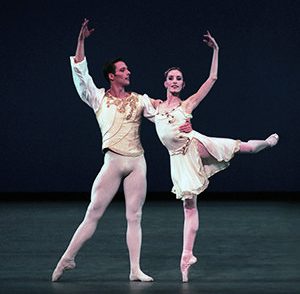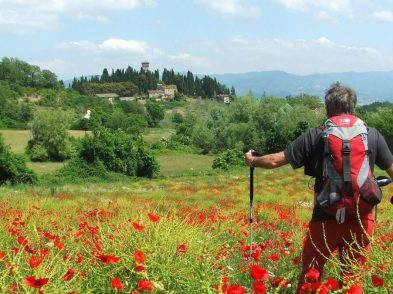Carnevale, known in English as ‘carnival,’ is
a centuries-old tradition across Italy. The rituals go back to ancient pagan
festivals but through the years were adapted to the Catholic church calendar.
The word comes from the Latin carne vale, meaning ‘farewell to meat,’ and it refers to the 40
days of restrictions during Lent. However, carnevale has become much more than a brief farewell to
protein-rich comestibles. It is a celebration: a time for parties and parades,
masquerades and confetti, music and dancing, fun and merrymaking. Italy’s
best-known carnival celebrations take place this year on February 21 (Fat
Tuesday) in Venice and Viareggio, known, respectively, for their elaborate
costumes and masks and satirical papier-mâché floats. However, from north to
south, Italy’s other regions mark the pre-Lent period, and Italy’s biggest and
best pre-Lent parties represent a surprising array of traditions. Use TF’s
short list to make last-minute plans for this year or keep it handy for future
editions.
Ivrea: The battle of oranges
February 18 to 21
The most
acclaimed carnival in the Piedmont region is in the town of Ivrea. Not only
will you witness a fun and colorful parade put on by the town’s districts, but
you’ll also be catapulted into an orange-throwing battle in the city center.
However, this battle is more than a just good food fight: it is a symbolic
re-enactment of a people’s revolt. Battles are fought in the town’s historical
squares between orange throwers on foot, who represent the people, and the
officers of a once tyranical feudal lord, who duck the flying fruit from atop
wagons drawn by horses. For three days the streets of Ivrea are filled with
crushed citrus and the battle ends with the burning of the scarli, a great bonfire in the center of town in which poles
covered with dried branches and leaves are set aflame. Interestingly, the
preferred fruit launched at this traditional event used to be apples; no one
knows how oranges eventually came into play as they are native to Sicily, in
Italy’s south, and must be shipped in for the battle. Fun fact: An estimated
265,000 kilos of oranges were brought to Ivrea from southern Italy in 1994. For
more information, see www.carnevalediivrea.com.
Verona: The Gnoco on a fork
February 17
The city of
Romeo and Juliet also boasts an old carnival, dating back almost 500 years, but
you won’t see any romance there. Unlike other festivals in Italy, Verona, made
famous for the two Shakespearean lovers, surprizingly celebrates its season
with food: gnocchi pasta is meant to commemorate
Tommasco da Vico, a wealthy Renaissance nobleman who donated flour to the poor
to make gnocchi during an emergency food shortage
centuries ago in the city’s St. Zeno area. Surviving the test of time, the
tradition stuck and visitors will see the Papa del Gnoco (‘father of the gnocco’) leading the parade to the St. Zeno church, carrying
a giant fork topped with a huge gnocco. After the parade, celebrate carnival with the locals
and enjoy a steaming plate of fresh gnocchi and a glass of wine. See www.carnevalediverona.it (in Italian) for more information.
Cento: Brazil in
Italy
February 5 to March 4
Forget the
trip to Rio de Janeiro: celebrate carnevale with a Brazilian twist in Cento, a town in the Emilia
Romagna region. Cento has been twinned to the carnival in Rio de Janiero since
1993 and claims to be one of the oldest carnivals in the world. During the
parade of giant, Brazilian-style papier-mâché floats and dancers, Italians
cruise on their motorcycles, tossing some 30,000 pounds of chocolates, sweets
and confetti to the people lining the streets. After the big parade, the crowd
votes, and the best, most authentic Brazilian float is sent to be a part of
Brazil’s carnival. The celebration ends with an extravagant fireworks show. For
more information, see www.carnevale-cento.com (in Italian).
Arezzo: Contest
and ritual
February 5, 12, 19, 26
If you have
already been to Viareggio, go to the province of Arezzo this year for another
old and established Tuscan carnival tradition, the Foiano della Chiana
carnival, which is held on the four Sundays in February. During the year, the
town’s four districts build elaborate allegorical floats, each vying for the
Carnival Cup. When music and medieval entertainment flood the streets each
Sunday, not only are the floats amazing, but the festivities also include the
burning of Giocondo, the King of Carnival. During this
ritual, locals hear an overview of the past year, which is the ‘will and
testament’ of the ‘king,’ before an effigy is burned to celebrate the town’s
rebirth after winter. For details, see www.carnevaledifoiano.it (in Italian).
Barbagia villages in Sardinia: Mayhem
andmagic
February 16 to 21
Barbagia is an area in Sardinia in
which each village has its own carnival tradition, but all of them are
influenced by ancient cults and mysterious pagan rituals about the world
turning upside down and humans becoming animals. In the town of Mamoiada, for
instance, humans-turned-animals called Mamuthones begin to appear on
January 16. During carnival, the townspeople dress in sheepskins, wooden masks
and, to ward off evil spirits, carry around with them about 30 kilos of
cowbells. The Mamuthones walk alongside the
Issocadores, people in
traditional Spanish costume and bearing lassos. Meanwhile, in the nearby
village of Orotelli, the townsfolk masquerade as blind people or ‘creepers,’
known as Sos
Thurpos, also to ward off evil. With their faces blackened by burnt cork (a raw
material native to the island), wearing dark hoods, black velvet suits, leather
boots and long black shepherds’ coats, the Sos Thurpos walk the streets
during carnival, also wearing cowbells to ward off evil. Although these
traditions might seem quite grim at first glance, visitors will soon realize
they involve much merrymaking: during the local parades, the humans dressed as Mamuthones and Sos Thurpos dance around,
making animal sounds, asking for wine and coaxing spectators to join in the
fun! For more information, see www.sardiniapoint.it.
Sa Sartiglia: The equestrian carnival
February 21
Sardinia, a
beautiful island in the Tyhrennian sea, boasts fascinating legends and lore.
Another famous carnival on the island takes place in the town of Oristano,
which carries visitors and townsfolk back to medieval times with a series of
street parades and demonstrations of equestrian skill. Held every year on Fat
Tuesday, La Sartigilia is a day-long festival followed by traditional horse
races and jousts. Local men don medieval dress and white masks and ride horses
covered in flowers through town, swords in hand. The evening ends with a
performance of acrobatic riders on horseback, called the race of the Pariglie, in the historical center. For more
information, see www.fondazionesartiglia.it.
Putignano: Puglia’s long good-bye
January 17 to February 21
Italy’s deep
south, the region of Puglia, is home to the country’s oldest carnival
celebration called the Putignano, a tradition that dates back more than 600
years. For more than a month leading up to Fat Tuesday, children dress in
costumes every Sunday. Every Thursday, a float parade features scathing
papier-mâché replicas of politicians and others, each week mocking a different
target, from priests and nuns, bachelors and married women, to politicians and
cinema stars. Although confetti covers the streets from Christmas until Easter,
Puglia’s carnival actually ends on the Tuesday before Lent, when most other
festivals begin. Representing the townfolks’ farewell to meat in the pre-Lent
period, locals take part in a funeral procession of a pig. For details, see www.carnevalediputignano.it (in Italian).
Acireale: Fantasy in Sicily
February 4, 5, 11, 12, and 15 to 21
People
travel from all over the world to witness this special carnival, said to be one
of the most beautiful in Sicily, with its unique floats. Several parades during
the month include performers and papier-mâché floats featuring celebrities, politicians,
fantastical characters and animals that are brought to life with internal
illumination systems and life-like mechanical movements. The parades move
through the center of town and the extraordinary floats go on display after the
fireworks on the last day of the carnival. For more, see www.carnevaleacireale.com.






